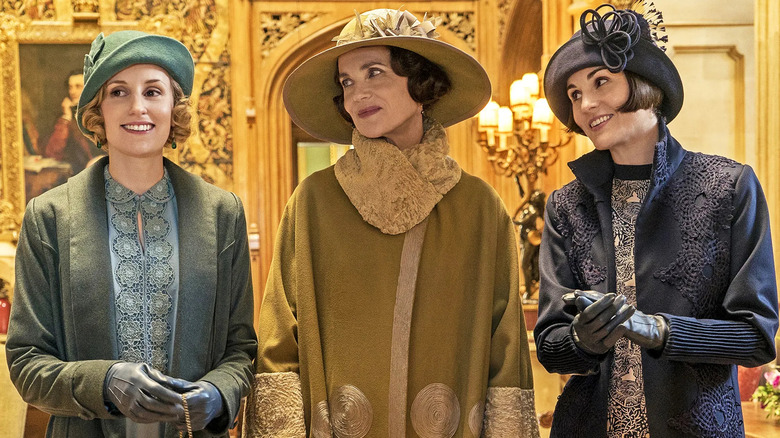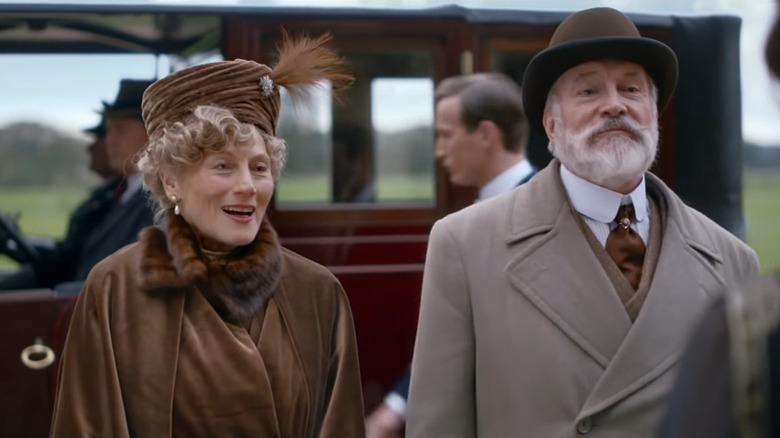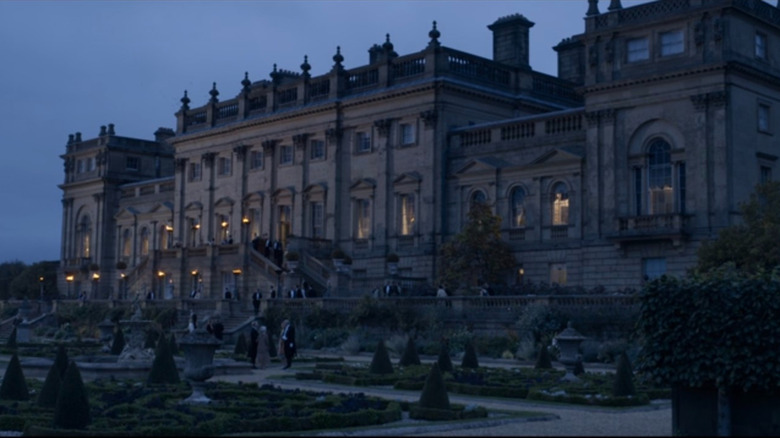This Was Julian Fellowes' Inspiration For The First Downton Abbey Film
Series creator Julian Fellowes ("The Gilded Age") could have kept "Downton Abbey" going for years. After all, soap operas are notorious for spanning generations. But I admire the restraint to put a pin in the series after six seasons of television. It felt like the perfect place to allow the characters to find their own futures. But as we know now, of course, the future of "Downton Abbey" was far from over.
Since the series finale in 2015, Highclere Castle has opened its doors to the aristocratic Crawleys and their downstairs staff once again with two theatrical feature films ("Downton Abbey: The Motion Picture" and "Downton Abbey: A New Era"), both of which are excellent extensions of the British period melodrama. I'm still kind of stunned they were able to pull it off, considering the obligation of giving the hefty ensemble their time to shine within the time constraints of a movie.
There's a plethora of characters to juggle for a television show, let alone a feature film. But Fellowes, along with director Michael Engler, managed to stay true to what made "Downton Abbey" a global phenomenon. The series had concluded in a place where the characters were gifted with some closure, but with room to give them another adventure, especially if you're bringing it to the big screen. It turns out that the central plot for the 2019 film is rooted in history.
Fellowes looked to an actual royal visit
The benefit of a series like "Downton Abbey" is to have so much history to choose from and interact with at the start of the 20th century. When it came time to come up with ideas for "The Motion Picture," Julian Fellowes looked to the past. The first feature sees the folks at Downton scrambling to make way for a royal visit from King George V (Simon Jones) and Queen Mary (Geraldine James).
According to Town & Country, the idea came to Fellowes after reading about the history of the royal couple. In 1912, they visited Wentworth Woodhouse, which is primarily known as the UK's largest private residence. "I wanted something that would affect both the family and the servants," said Fellowes. I have zero interest in the royal family, but I understand why he would see their magnificent presence affecting the folks at Downton, especially Kevin Doyle's hyper anxious Mr. Molesley.
It's worth mentioning that King George V and Queen Mary later had actually visited Highclere Castle over five years later in 1917. It's easy to see why Fellowes opted to choose a different visit, considering their appearance at the estate was around the period in which it was transformed into a makeshift hospital during World War I. If anything, I'm surprised the series never leapt at the opportunity to include that in its second season.
Wentworth Woodhouse was where the party was at
When King George V visited Wentworth, it was amid a period of industrial tensions, which pushed him to appeal to the working class by visiting the factories and so forth. According to the Yorkshire Post, while visiting the Yorkshire coalfields at the time, the royal couple opted to stay there given it was the closest stately home within a reasonable distance of their stops.
Just as you saw in the film, they brought a large portion of their personal staff to accommodate the visit. Another way in which "Downton Abbey" paid homage to the visit was through re-creating a ball that the actual King George V and Queen Mary had actually attended.
To make it even more authentic, the interior and exteriors of Wentworth were utilized by the "Downton Abbey" cast and crew for the film. The ball in question took place in a gorgeous section of the estate called the Marble Saloon, in which Anna Pavlova, one of the most distinguished Russian ballerinas, performed for the king and queen. While the film may not feature Pavlova's dance, the Yorkshire Post notes that over 150 extras, including a band, were used to set the scene of what the party would have possibly looked like.
"Downton Abbey: The Motion Picture" is currently available to rent and buy on multiple VOD streaming platforms.


